The 9mm Luger and .380 ACP were invented in 1901 and 1908 respectively. With a history dating back more than 100 years, these cartridges are still fanatically popular among the masses. While the .380 ACP lost some of its fame along the way, the 9mm is still seen as the revered superhero in the world of handgun cartridges.
Did you ever notice that both these cartridges fire the same diameter bullet? Perhaps you may not know that the trajectories of their bullets in comparable weights are also the same as well. Then why and where does one excel over the other? This and more for you in this guide below.
TL; DR: 380 vs 9mm

.380

9mm

Pros
.380
Small guns, very easy to conceal
Ample wounding power for short range
A wide range of ammo and gun options
Lightweight, low recoil, and very controllable
9mm
Good stopping power and accuracy
Carry more rounds in smaller space
Guns and ammo are generally very cheap
Widely used & available (even by NATO)
Cons
.380
Not very versatile
Ammo is generally pricey
Lack of lethal stopping power
9mm
Slightly difficult to reload
Will need more hits than a .45 ACP
Best For
.380
The .380 acp is great for recoil sensitive shooters and as a backup handgun for self-defense.
9mm
The 9mm is a versatile cartridge used by the military and police. Great for defense, competitions, and range use.
A .380 Overview
The .380 ACP (9x17mm) is a rimless straight-walled pistol cartridge developed by John Moses Browning in 1908. It fires a 0.355 inch (9mm) bullet and the ACP stands for automatic colt pistol. This cartridge is also popularly known as 9mm short or 9mm Kurz.
The .380 ACP is considered a low power handgun cartridge and is mostly used with blowback action pistols. An advantage of these pistols is their simple and cost-effective design since there is no need for a barrel locking mechanism.
The round is more than a century old and has been very popular the entire time. Initially, it was adopted by a few European militaries but later lost its shine around WWII when more powerful options became available.
It is a short and light cartridge that allows it to be used with compact and even subcompact handguns. The stopping power is quite little when compared with modern handgun loads for combat. However, the controllability of these rounds is top-notch, especially where recoil-sensitive shooters are concerned.
There’s a wide range of ammo options available for the .380 ACP and it is fairly popular among female users for self-defense and also as a preferable choice for subcompact backup CCW handguns.
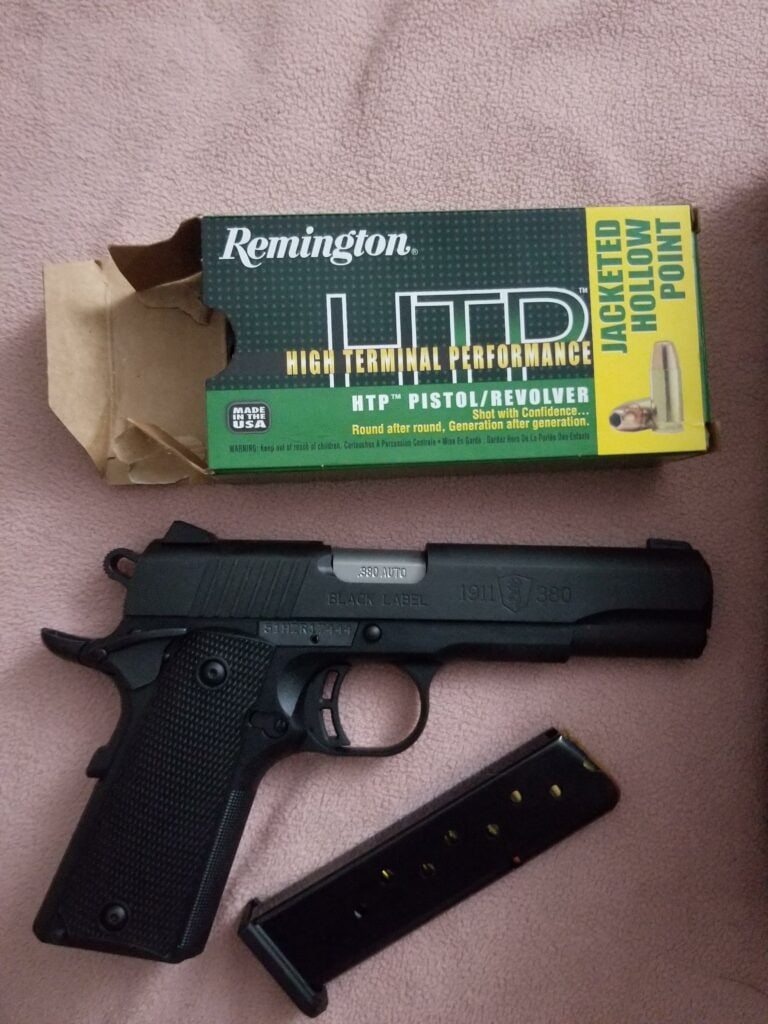
A 9mm Overview
The 9mm cartridge was developed in the year 1901 by famous Austrian designer Georg Luger. It is a rimless, tapered cartridge made to be used in handguns, revolvers, and submachine guns. It fires a 0.355 in diameter bullet and is shorter and lighter than its predecessor handgun cartridges.
Even today, the 9mm holds the record for the most popular handgun cartridge of all time. Not only was it popular during the Great Wars, but it is also still the most preferred choice of police departments, militaries (NATO and many non-NATO), and civilian users.

The cartridge is also known by other names such as 9mm Parabellum, 9mm Luger, 9mm NATO, and 9x19mm. Being a flat autoloader cartridge, the 9mm rounds can be easily stacked in flat magazines which eliminates the problem of carrying extra ammo with concealment.
Due to its power, high magazine capacities, and ample stopping power, the 9mm popularized the use of semi-automatic handguns. The first transitions were seen among U.S police departments during the 1980s when many officers switched their revolvers for the quick reloading and high mag capacity handguns chambered in the 9mm.
As far as the military is concerned, again the controllability and ammo carrying capacity gave it more preference over heavier rounds like the .45 ACP. Being widely popular also means there is a lot of bullet options and data available out there.
380 vs 9mm: Cartridge Specs
Let’s compare the cartridge dimensions and specs for both these cartridges.
 | 380 | 9mm |
|---|---|---|
| Bullet Diameter | .355 in (9.0 mm) | 0.355 in (9.01 mm) |
| Neck Diameter | .373 in (9.5 mm) | 0.380 in (9.65 mm) |
| Base Diameter | .374 in (9.5 mm) | 0.391 in (9.93 mm) |
| Case Length | .680 in (17.3 mm) | 0.754 in (19.15 mm ) |
| Overall Length | .984 in (25.0 mm) | 1.169 in (29.69 mm) |
| Case Capacity | 11.9 grains | 13.30 grains |
| Max Pressure (SAAMI) | 21,500 psi | 35,000 psi |
| Typical Casing Material | Brass | Brass |
| Typical Bullet Weight (gr) | 85-95 grains | 108-128 grains |
The .380 and 9mm share the same bullet diameter and technically both are 9mm bullets. However, the .380 is a less powerful cartridge than the 9mm, which is already evident from the measurements and visual inspection.
The .380 ACP is close to an inch in overall length, whereas the 9mm is just a tad longer. This means a microsecond of faster cycling time for the .380 ACP but that doesn’t create much of a difference.
As you can see in the table, the .380 ACP is loaded at almost half the pressure of 9mm (not taking into consideration +p loads). Plus, the highest bullet weights reach only close to 100 grains. This translates to lower recoil, lesser noise, and better controllability. Along with more space for extra rounds in a handgun of comparable size.
On the other hand, the 9mm is a heavier bullet with a ton of options for ammo to choose from. Since it is widely used by military forces across the world, you can find almost 12 different types of bullet options to choose from. Due to the smaller base diameter, 9mm bullets can be used easily in double-stack magazines, allowing the user to carry more in a similar space.
380 vs 9mm: Ballistics
Comparing the ballistics of handgun cartridges can seem a bit less useful to some people. That’s because handguns are mostly used within a range of 100 yards, even more commonly under 50 yards. So there is not much distance that can affect the range, trajectory, velocity, and energy of a bullet. But anyways, the ballistics can be an important fact sheet for competitive shooters or dedicated preppers or combat operatives for whom every inch matters.
380 vs 9mm: Trajectory
Take a quick peek at the trajectory of the .380 ACP and 9mm inside a range of 100 yards.
380
| 7” barrel / BC 0.100 / 95 gr FMJ | 7” barrel / BC 0.100 / 85 gr VHP | 7” barrel / BC 0.91 / 99 gr Hydra-Shok Deep |
|---|---|---|
| 25 yds: 0.8” High | 25 yds: 0.7” High | 25 yds: 0.8” High |
| 50 yds: 0.0” | 50 yds: 0.0” | 50 yds: 0.0” |
| 75 yds: 3.5” Drop | 75 yds: 3.3” Drop | 75 yds: 3.4” Drop |
| 100 yds: 9.8” Drop | 100 yds: 9.5” Drop | 100 yds: 9.7” Drop |
9mm
| 7” barrel/ BC 0.120 / 115 gr FMJ | 7” barrel/ BC 0.150 / 124 gr FMJ | 7” barrel/ BC 0.200 / 147 gr FMJ |
|---|---|---|
| 25 yds: 0.4” High | 25 yds: 0.5” High | 25 yds: 0.7” High |
| 50 yds: 0.0” | 50 yds: 0.0” | 50 yds: 0.0” |
| 75 yds: 2.4” Drop | 75 yds: 2.4” Drop | 75 yds: 3.1” Drop |
| 100 yds: 7” Drop | 100 yds: 7” Drop | 100 yds: 8.7” Drop |
The trajectory of a bullet over a given distance describes how much adjustment will you need to the sights in order to compensate for the effect of gravity. I’m sure anybody reading this is aware of that.
Now looking at the trajectory data of the .380 ACP bullet, it is clear that the difference in trajectory is almost negligent with its heavy, medium, or lightweight bullets. As you can decode, the gun is zeroed at 50 yards, which is the most common zeroing distance for most applications. Unless you are specifically aiming for competition targets.
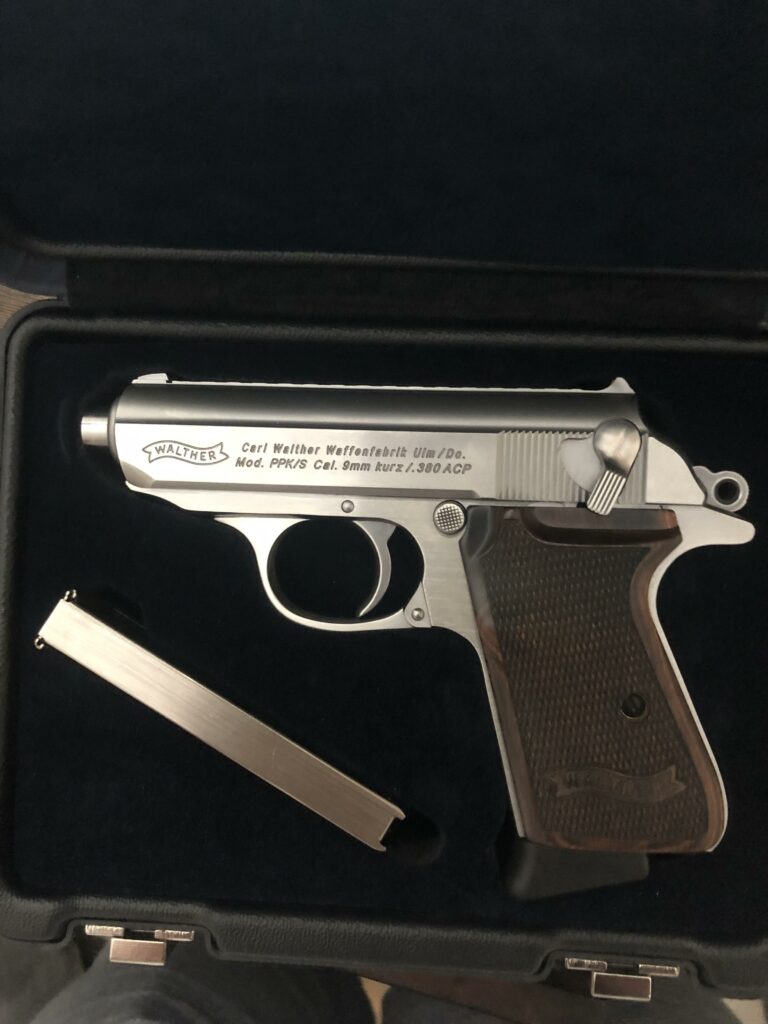
The .380 ACP bullet shows an average drop of three inches at 75 yards and 9.5 inches at 100 yards. While it is not suitable for distances that far, the .380 ACP is loaded at light pressures and should be used within a distance of 50 yards.
Now looking at the 9mm data, the bullet drops an average of 2.5 inches at 75 yards and seven inches at 100 yards. This is clearly a remarkable performance and makes the 9mm a great choice for long range handgun uses like competitions. Couple a 9mm bullet with a Glock 34’s long sight radius and you will have a tack driver.
380 vs 9mm: Velocity & Kinetic Energy
The metrics of velocity and kinetic energy will explain how far a bullet will travel and how much force it carries at different distances. This will also tell us about stopping power which will be discussed in the next section.
380
| 7” barrel / BC 0.100 / 95 gr FMJ | 7” barrel / BC 0.100 / 85 gr VHP | 7” barrel / BC 0.91 / 99 gr Hydra-Shok Deep |
|---|---|---|
| 25 yds: 937 ft/s, 185 ft.lbs | 25 yds: 953 ft/s, 172 ft.lbs | 25 yds: 949 ft/s, 198 ft.lbs |
| 50 yds: 899 ft/s, 170 ft.lbs | 50 yds: 914 ft/s, 158 ft.lbs | 50 yds: 907 ft/s, 181 ft.lbs |
| 75 yds: 865 ft/s, 158 ft.lbs | 75 yds: 879 ft/s, 146 ft.lbs | 75 yds: 869 ft/s, 166 ft.lbs |
| 100 yds: 835 ft/s, 147 ft.lbs | 100 yds: 847 ft/s, 135 ft.lbs | 100 yds: 835 ft/s, 153 ft.lbs |
9mm
| 7” barrel/ BC 0.120 / 115 gr FMJ | 7” barrel/ BC 0.150 / 124 gr FMJ | 7” barrel/ BC 0.200 / 147 gr FMJ |
|---|---|---|
| 25 yds: 1,106 ft/s, 312 ft.lbs | 25 yds: 1,095 ft/s, 330 ft.lbs | 25 yds: 976 ft/s, 311 ft.lbs |
| 50 yds: 1,048 ft/s, 280 ft.lbs | 50 yds: 1,049 ft/s, 303 ft.lbs | 50 yds: 953 ft/s, 297 ft.lbs |
| 75 yds: 1,001 ft/s, 256 ft.lbs | 75 yds: 1,010 ft/s, 281 ft.lbs | 75 yds: 933 ft/s, 284 ft.lbs |
| 100 yds: 961 ft/s, 236 ft.lbs | 100 yds: 977 ft/s, 263 ft.lbs | 100 yds: 914 ft/s, 273 ft.lbs |
The .380 ACP bullet falls short from being a supersonic round even at the muzzle. However, it still carries around 200 fpe at a short distance of 25 yards. While not enough to totally or even partially incapacitate a charging threat (unless hit on a vital spot), this is still some power to fend off a non-determined attacker.
Additionally, the velocity and power are not enough to penetrate construction materials and make the handgun a great home defense weapon.
On the other hand, the 9mm shows better velocity and energy because of the hotter pressures and a heavier bullet. A 9mm handgun can be very accurate out to 100 yards and the bullet will hold enough energy to successfully stop an attacker. By that, I mean a human attacker and a charging medium animal.
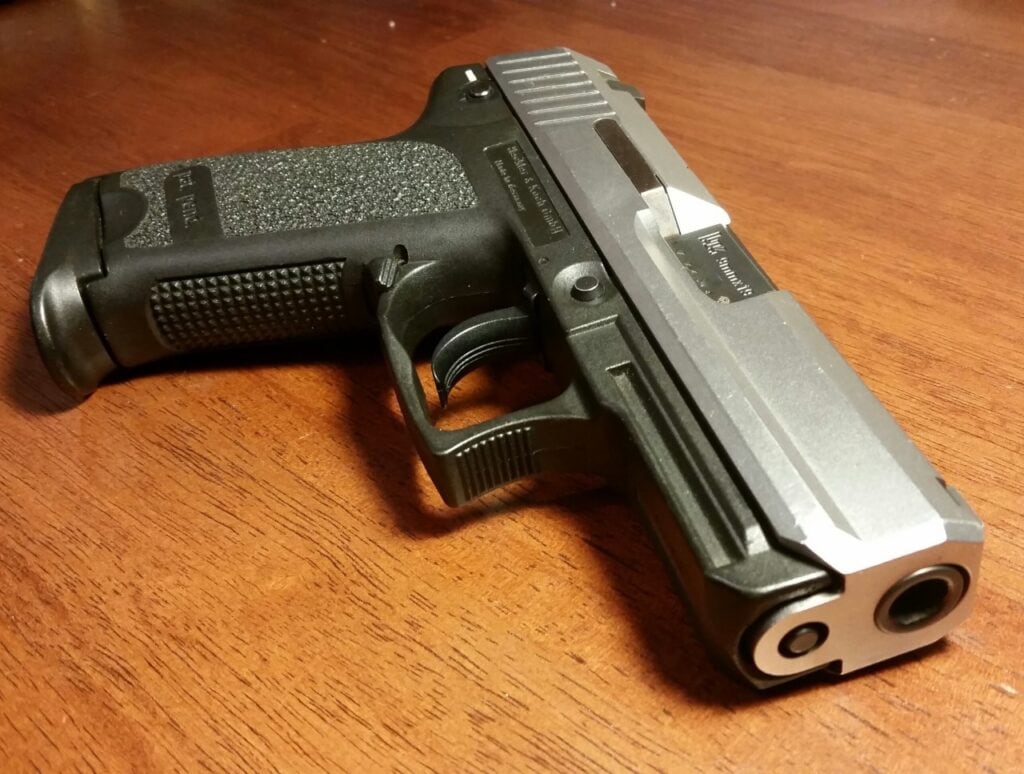
380 vs 9mm: Stopping Power
Coming to the actual question, understand how effective a .380 ACP vs a 9mm will be in neutralizing a target. This will refer to either incapacitation of the target or totally immobilizing it. The better the stopping power of a bullet, the quicker your target will be brought down. This takes into consideration the factors of penetration, momentum, velocity, and sectional density of the bullet.
380 vs 9mm: Momentum & Sectional Density
Take a look at the data below for an overview of how these two rounds stack up:
380
| 7” barrel / BC 0.100 / 95 gr FMJ Sectional Density: 0.108 | 7” barrel / BC 0.100 / 85 gr VHP Sectional Density: 0.096 | 7” barrel / BC 0.91 / 99 gr Hydra-Shok Deep Sectional Density: 0.112 |
| 25 yds: 12 lb-s | 25 yds: 11 lb-s | 25 yds: 13 lb-s |
| 50 yds: 12 lb-s | 50 yds: 11 lb-s | 50 yds: 12 lb-s |
| 75 yds: 11 lb-s | 75 yds: 10 lb-s | 75 yds: 12 lb-s |
| 100 yds: 11 lb-s | 100 yds: 10 lb-s | 100 yds: 11 lb-s |
9mm
| 7” barrel/ BC 0.120 / 115 gr FMJ Sectional Density: 0.130 | 7” barrel/ BC 0.150 / 124 gr FMJ Sectional Density: 0.141 | 7” barrel/ BC 0.200 / 147 gr FMJ Sectional Density: 0.167 |
| 25 yds: 18 lb-s | 25 yds: 19 lb-s | 25 yds: 20 lb-s |
| 50 yds: 17 lb-s | 50 yds: 18 lb-s | 50 yds: 20 lb-s |
| 75 yds: 16 lb-s | 75 yds: 17 lb-s | 75 yds: 19 lb-s |
| 100 yds: 15 lb-s | 100 yds: 17 lb-s | 100 yds: 19 lb-s |
The sectional density of a bullet is the ratio of its mass to the cross-sectional area. The higher the sectional density, the better penetration will be delivered. For example, a nail has a pointed end hence little cross-sectional area so a higher SD. So it will penetrate easier when a force is applied.
Similarly, the momentum carried by a bullet elaborates the effectiveness of energy transfer by the bullet. A high momentum coupled with a high SD will mean deeper penetration and a bigger wound channel.
As evident from the data in the table above, the .380 ACP is clearly a very low-penetrating bullet that will cause little damage. On the other hand, the heavier 9mm bullets have a higher sectional density and almost 60% more momentum. Which makes them more decimating compared to the .380 ACP.
Additionally, the SD of neither of these bullets is enough to engage a medium-sized animal which requires a minimum of 0.220 SD. But yes, these bullets can be used effectively against small game animals and neutralizing threats at short range with the right bullet placement.
380 vs 9mm: Use Cases & Effective Range
After a comprehensive comparison of ballistics, let’s now compare the best real-life use cases to understand where these cartridges excel.
Self-Defense / Home Defense
Clearly, the most obvious and common use for handguns is self-defense. They are small, easy to conceal and handle and address problems like over-penetration handling very well. The .380 ACP has long been a favorite of EDC and CCW users and a major chunk of them has been women. The .380 ACP and its sister caliber the .38 SPL had a very popular revolver market back in the ’80s.
On the other hand, the 9mm has been the official sidearm cartridge for many militaries and it still is today. It is widely trusted by defense personnel and civilians due to its appropriate stopping power and ease of handling.
If we compare both these cartridges side-by-side for defense applications. The 9mm is the clear winner due to its better power, easy availability, and wide range of load options.
The .380 ACP offers somewhat less surety when hitting a target to stop it dead in its tracks. Which is a reason why most people use it for a backup weapon rather than a primary one.
Competitive Shooting
Interestingly, accuracy is affected by many factors that concern the ammo, weapon, shooter, and shooting conditions. As far as competitions are concerned, the .380 ACP can prove to be a better choice for competitions. That’s not just a vague statement and there are a few qualities of this round that favor this.
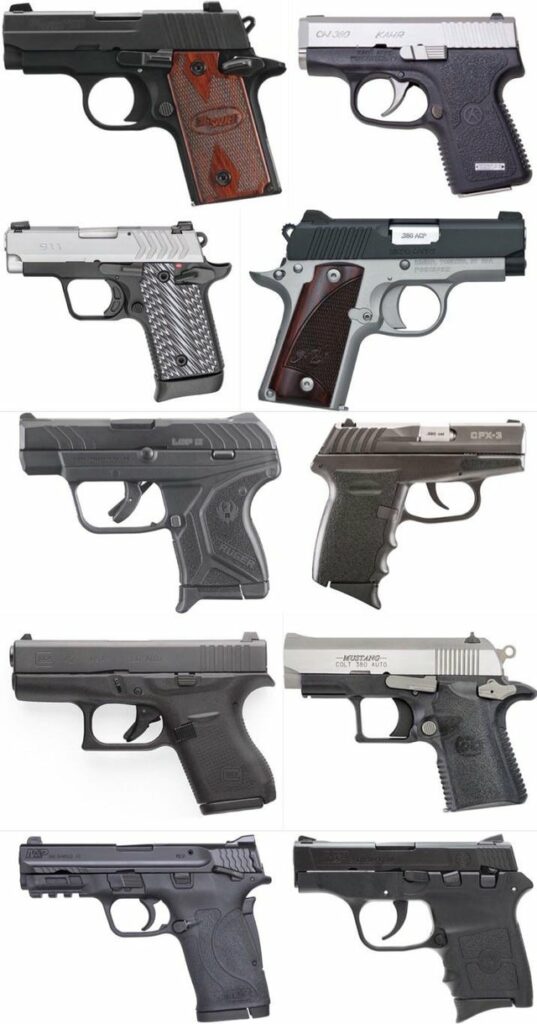
Firstly, the .380 ACP has lesser recoil and is more controllable, allowing you to stay on the target better. Secondly, this round shows drops similar to the 9mm within 50 yards and which is where most competitive shooting will be done.
It’s not that the 9mm is not good for competitions. You can trust it for longer ranges and a better trajectory. However, it all eventually comes down to your tastes and needs.
Hunting Defense / Camping / Survival
The 9mm will have an effective maximum range of 100 yards against humans and small critters. The .380 only has about 50 yards where it can prove lethal. If you are planning on carrying a handgun for defense out in the woods, the .380 acp should be dead out of the question. It simply does not carry enough power to fend off a charging animal without proper shot placement.
The 9mm can be a better choice for survival and small game hunting within 30 yards. However, if you are looking for a more versatile and powerful pick, go with a .357 or .45 ACP.
380 vs 9mm: Costs, Availability, & Compatibility
The .380 acp and 9mm are very popular handgun calibers and are owned by many. However, does choosing one over the other give some advantage in terms of cost, ammo availability, or something else.
Popular and Cheap vs Pricey and Special
The 9mm is undoubtedly among the top three popular handgun calibers in the USA. Which means it stays insanely in demand all year round. The fact that it is used by the police and military makes the demand skyrocket even more. Hence, there is no chance that you’ll find it getting scarce on the shelves.
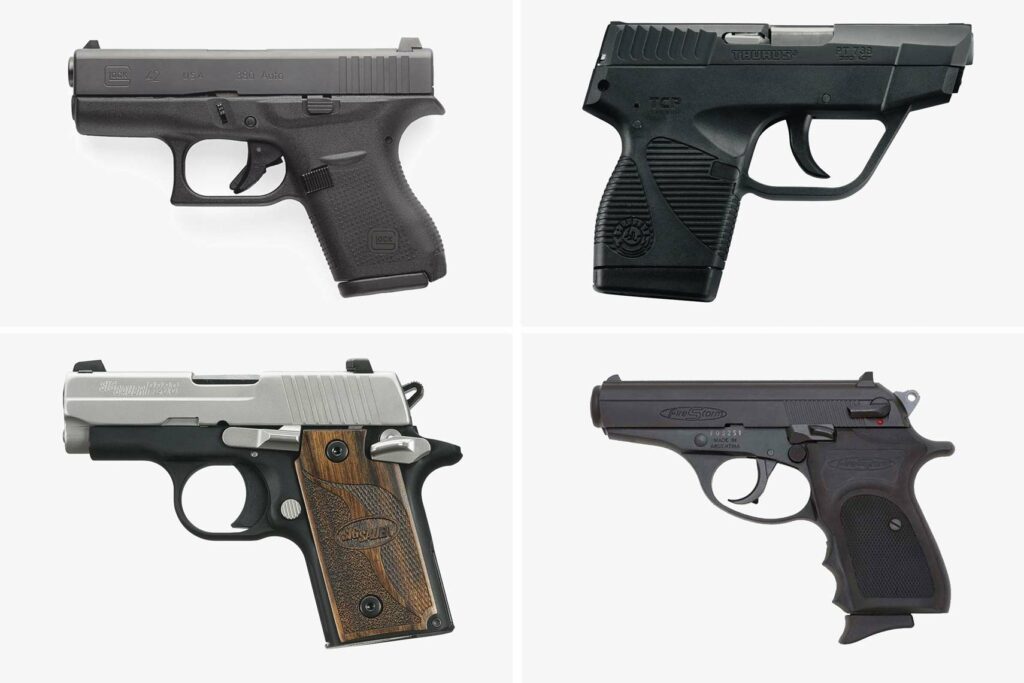
Even during the Covid-19 pandemic panic buying, the ammo was available, even at a higher price. The 9mm will cost you an average of about $0.70 per round these days. Whereas the .380 ACP will always cost you more than $1 per round on average, sometimes even as high as $2 per round.
That is because of the supply-demand gap because more people prefer the 9mm over the .380 ACP at any given day.
Low Power vs High Power
As I already mentioned while opening this discussion, the .380 ACP is a low power cartridge and is mostly found in blowback-operated pistols. On the other hand, the 9mm can be loaded to higher pressures and has a wide range of handgun options available for it.
Bottom Line
The 9mm Luger and .380 ACP fire the exact same bullet which is 0.355 inches (9mm) in diameter. However, the 9mm Luger operates at much higher pressures compared to the .380 and has a better range, velocity, and more stopping power.
A small bullet with good power that can be carried in more numbers inside a normally framed handgun makes the 9mm Luger more popular for defense uses. Whereas the .380 ACP offers lesser recoil and more controllability but at the expense of lesser stopping power. While the 9mm is a very versatile caliber for many suitable applications, the .380 acp is more of a backup handgun caliber better suited for recoil sensitive shooters.


